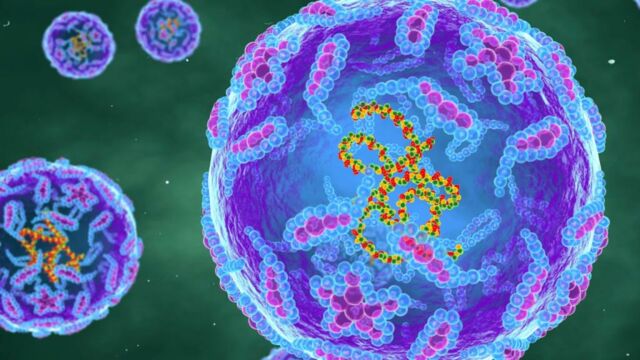Several cases of poliovirus have been detected between February and May this year in London. While it is normal for one to three vaccine-derived polioviruses to be detected each year in UK sewage samples, this is the first time the same virus has been found a few months apart since 1984. It has been declared a national incident,as reported by Sky News.
Discover our latest podcast
What is polio?
The full name for polio is poliomyelitis, which according to the World Health Organisation (WHO), is a highly infectious viral disease mainly affecting children under five-years-old.
According to the CDC, the virus is transmitted from person to person through contact with the faeces of an infected person or less commonly, through droplets from their sneeze or cough.
It enters the body via the mouth and can infect a person’s spinal cord, resulting in paralysis.

What are the symptoms?
Most people who contract polio (approximately 72 out of 100) will not have any visible symptoms. Approximately 1 out of 4 people (or 25 out of 100) will have flu-like symptoms which typically last two to five days and then go away on their own.
A smaller number of people (much less than 1 out of 100, or 1-5 out of 1000) will develop other, more serious symptoms that impact the brain and spinal cord. These are, according to the CDC:
- Paresthesia (feeling of pins and needles in the legs)
- Meningitis (infection of the covering of the spinal cord and/or brain) occurs in approximately 1 out of 25 people with polio
- Paralysis (inability to move parts of the body) or weakness in the arms, legs, or both, occurs in approximately 1 out of 200 people with polio
Paralysis is the most severe symptom, as it can cause permanent disability and even lead to death. This is because the virus can affect the muscles that help you breath. Between 2 and 10 people out of 100 who experience paralysis die.
How is it prevented/treated?
According to the WHO, 'there is no cure for polio; it can only be prevented by immunization.' In addition, treatment for polio can only alleviate symptoms. Therefore, it's important that adults and children receive the multiple polio vaccinations.
Nearly all children (99 to 100 children out of 100) who receive all the recommended doses of the polio vaccine will be protected for life, according to the CDC.
Thanks to the vaccine, polio has nearly been totally eradicated worldwide, which is 'why it is a major blow that traces of the virus have been detected in London,' as Tom Clarke writes for Sky News.
Read more:
⋙ Monkeypox: The signs and symptoms of the virus detected in the UK
⋙ Parkinson’s: These are the early symptoms to watch out for
⋙ Tuberculosis and COVID: What are the common symptoms and differences?















